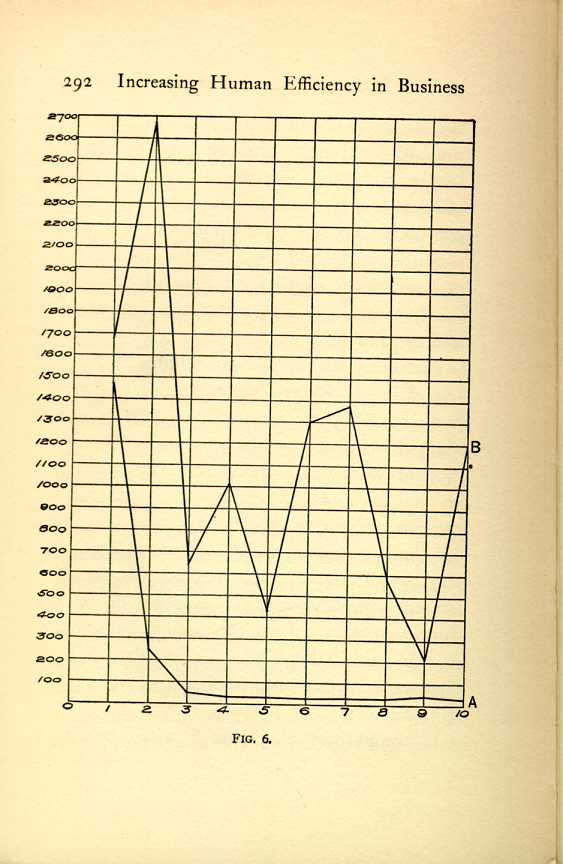| CHAPTER XII
MAKING EXPERIENCE AN ASSET: JUDGMENT
FORMATION Increasing Human Efficiency in Business: A Contribution to the Psychology of Business | ||
Reflective judgments
A practical judgment is based on a single concrete case. A reflective judgment is based on a generalization, an abstraction, or a principle derived from many previous experiences.
Last night a salesman tried to induce me to purchase an interest in an Idaho apple orchard. Thereupon I recalled an instance of a friend who a year ago had made such a purchase and had found it a profitable investment. If on the basis of this or some other concrete case I
Last week on the golf links I saw a Bohemian peasant woman wearing clothes full of small holes. I tried to figure out how the clothing had become so injured. I recalled seeing a coat that had been left all summer in an attic till it had been eaten to pieces by the moths. On the basis of that recalled incident I satisfied myself by means of the practical judgment that she was wearing moth-eaten clothing. A few days later I saw three of these women working on one of the greens, and each of them had on clothing full of small holes. I began to reflect as to the cause of the holes. I observed that each woman held a bottle in her hand and was apparently applying the contents of the bottle to the roots of the dandelion
A manager of a large manufacturing and selling organization made a study of the conditions affecting the prosperity of his organization. From his observations he deduced the principle that for him it is more important to increase the loyalty of the men to the organization than to reduce the apparent labor cost. With this principle in mind he made various reflective judgments in upbuilding his organization.
In these illustrations of theoretical or reflective judgments it will be observed that no previous single experience was in the mind of the one forming the judgment but merely a generalization, an abstraction, or principle.
The experience that is really capitalized is
The significance of reflective judgments in increasing human efficiency was manifested in a striking manner by the following experiment. A group of individuals were tested as to their ability to solve a number of mechanical puzzles. The time required for each individual was recorded. The subjects then described as completely as possible how they had solved the problem (worked the puzzle). In some instances the subjects kept trying blindly, till by accident they hit upon the right method. In such cases the second and third trials might take as long or even longer than the first trial. If, however, the subject had in mind the right principle or principles for solving the problems, the time required for succeeding attempts fell abruptly. Curve A of Figure 6 is a graphic representation of the results of A with one of
Another young man, B, in solving his problem. (Chinese Rings Puzzle) succeeded after working 1678 seconds. At the completion of this successful attempt he had in mind no principle for working it. The second trial was not so successful as the first and lasted 2670 seconds. With succeeding trials he reduced his time but not regularly and was still working "in the dark." His method was one of extreme simplicity and probably not different from the "try, try again" method employed by animals in learning. The results of his first ten trials are graphically shown in Curve B of Figure 6.
A comparison of Figure 6 with the five

FIG. 6.
[Description: Black and white line graph.]A judgment once having been made may be utilized again and again. The process of applying these preformed judgments is known as an intuitive or perhaps better called an expert judgment.
| CHAPTER XII
MAKING EXPERIENCE AN ASSET: JUDGMENT
FORMATION Increasing Human Efficiency in Business: A Contribution to the Psychology of Business | ||